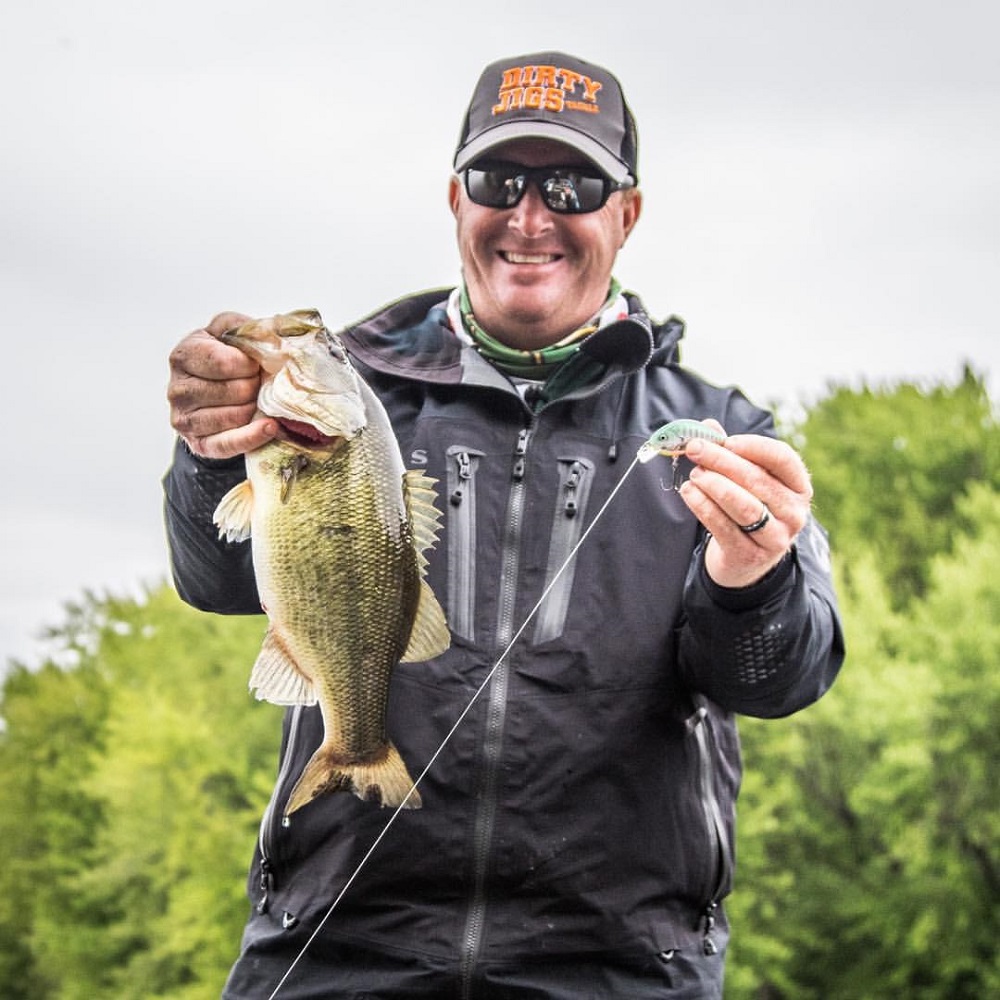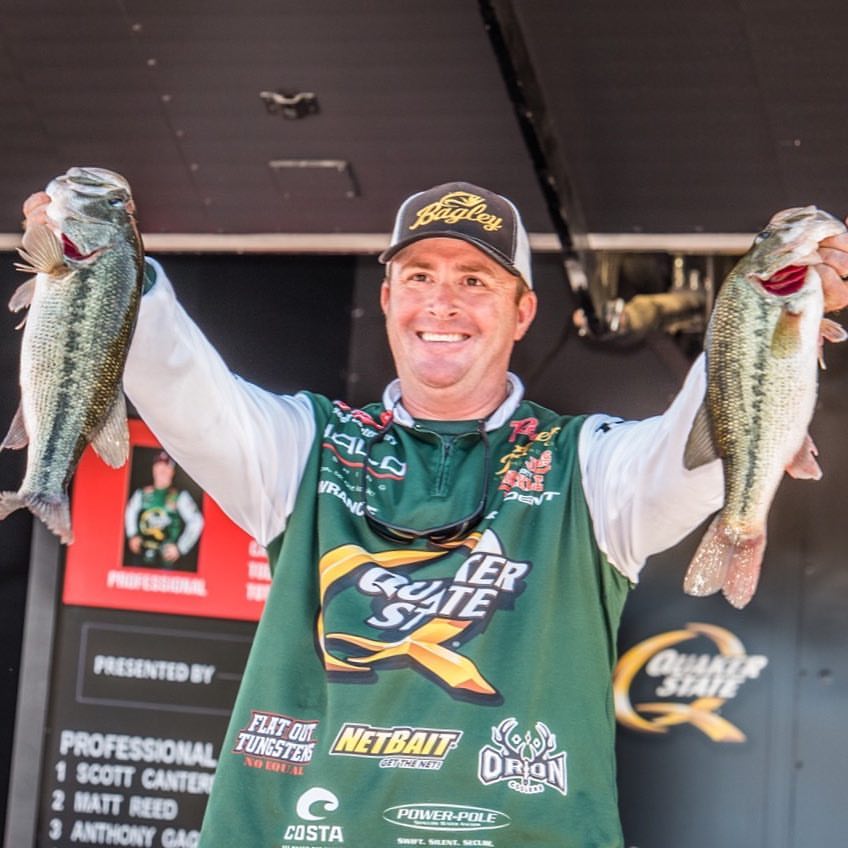
We have plenty of options when it comes to fishing line. There are three major types of line and countless pound test options available. Choosing the right pound test and line type can have a big role in how your bait acts under the surface. FLW Tour Scott Canterbury breaks down how he selects which line to use for a variety of reaction baits.
Generally, he likes to use as big as he can get away with. “I like to use the heaviest line I can and still get the best action from my baits. This goes for everything from flipping to reaction baits. Line size is a huge factor,” he says.
Cover Is a Factor in Line Selection
When fishing around grass with a lipless crankbait, Canterbury will also switch to a braided line.
“I’ll use P-Line TCB 8 in a 30 or 40-pound so if I hang up on a little grass I can rip it free and not hurt the vibration of my bait or waste a cast with grass on the trebles.”
When fishing a spinnerbait, he also goes heavy and switches between 15, 17 and 20-pound P-Line Tactical fluorocarbon.
“I would say 17-pound is my go-to but will go up to 20-pound if I am around a lot of rock and wood. I’ll switch to 15 if I want to get it down just a little deeper,” he adds.
When fishing a square bill, Canterbury often goes as heavy as he can. “You can get away with a heavy 15 or 17-pound fluoro and you won’t lose any action out of the bait.
READ RELATED: Topwater Line | What Type, What Pound Test and Why?
Water Temperature Is Also a Consideration When Choosing Fishing Line
Canterbury often goes with monofilament when the water is cold. This allows the bait to act differently than it does with fluorocarbon due to the sinking properties of this type of line.
“If it the water is above 50-degrees, I like to throw a jerkbait on 10 or 12-pound P-Line Tactical fluorocarbon, but when it is colder than that I go with the CXX mono. I like the slow floating that mono gives to the baits.”
“When I am throwing a small shad profiled bait or light balsa bait, I am going to use 10, 8 or even 6-pound P-Line CXX monofilament. If it is really cold and I am using a spinning rod, I will be using the 6-pound,” he shares. “The light baits won’t have a good action if you go much higher then 10-pound line.”
Line Can Change the Action and Diving Depth
One of the simplest ways to affect a lure’s action and diving depth is to adjust line size. Going up or down a size can greatly affect the bait’s action, but it can be a fine line between helpful and harmful. Too heavy and the lure won't dive deep and too light and you lose strength.
When he is fishing a crankbait, for instance, he pays attention to the diving depth of the bait and the actual depth of the water.
“If I am using a bait that dives down deeper than the water is, I like to use a little heavier line. This lets me still hit the bottom and make contact, but gives me a little more strength in my line,” he says.
On the other hand, if the bait dives roughly the same as the depth of the area he is fishing in, he will go down a size to ensure it reaches the bottom.
“Usually with crankbaits, I’ll try to use either 10 or 12-pound P-Line Tactical fluorocarbon. I have really liked fishing that line for crankbaits because it has a little bit of stretch and that helps with treble hook baits, so you don’t lose as many fish.”
READ RELATED: Bryan Thrift’s Approach to Bass in Heavy Cover
As he mentioned in the previous section, 10 and 12-pound fluorocarbon are his staples for jerkbaits, but there are times when he chooses 15-pound monofilament line.
“Sometimes I’ll go heavier and use the CXX mono if I want to keep the bait up higher in the water column. Sometimes the fish are just up higher and want a bait that is working just below the surface,” he shares.
Another time he changes line size is with lipless crankbaits and he had a prime example of how much it can make a difference.
“At Guntersville a few years ago, I had three of the exact same lipless crankbaits rigged on three different pound tests. Each would be better for different situations and how high the grass was,” he recalled.
This allowed him to fish the same bait in a variety of circumstances without reattaching the lure to another rod. As an example, if he is fishing shallow flats, 17-pound CXX is his go-to. If he uses the same bait on deeper grass lines down to 10-feet, he opts for 12-pound P-Line Tactical fluorocarbon.
Choosing the right line for the right lure comes down to many factors. Water temperature, cover, action and more all play a role. Hopefully, Scott Canterbury’s insight can help you better work your way through the often confusing process of selecting the perfect line for each bait.



 Advertising
Advertising